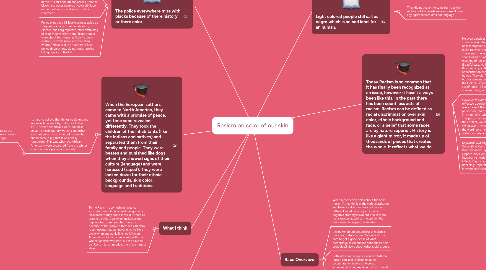Rasicm on color of our skin
by Janease Bender

1. The police everywhere miss with blacks because of there history or there color.
1.1. The hard truths about American racism exposed by Ferguson aren’t going away. That’s the case, even as the first African-American president, Barack Obama, responding to Monday’s renewed rioting, said, “Nothing of significance, nothing of benefit, results from destructive acts.” Racism is real, Obama said, and he urged Americans to “mobilize,” “organize,” find the “best policies,” and “vote.”
1.2. In the St. Louis suburb and across America, blacks and other people of color still face embedded racism and second-class treatment.
1.3. Police shoot and kill blacks almost twice as frequently as any other racial group, MotherJones.org reported, after examining piles of federal crime data. “Black people were about four times as likely to die in custody or while being arrested than whites.” MoJo said the majority of local police departments do not report police killing figures to the FBI.
2. When the European settlers came to North America, they came with a promise of peace, yet time soon revealed differently. They took the children of the inhabitants (like the Indians and natives) and separated them from their family and people. They were beaten and punished like dogs when they showed signs of their culture (language) and were harassed (raped). They were looked down for their ethnic backgrounds, skin color, language and traditions.
2.1. Its hard to believe that things could get any worse as time went by, but it did. In the 1900’ African Americans were looked as servants maids factory workers and other low class jobs. This continued for awhile and became o big that it was finally recognized. This was when the African Americans were separated from the whites, in school, work places and society.
2.1.1. They did not have the same rights as the whites did. In Canada natives weren’t given any rights to vote until not long ago.
3. What I think
3.1. To me Racism is something I was not exposed to much because it has gotten a little better today, but it is still out there all around us, this urge which makes us feel higher when compared to others just because of the simple differences. Racism is something that can never end, its like a cycle when one act is finished (African Americans is looked at as equals with the whites) another will start, but we have to try. Racism is not needed, therefore it must stop.
4. Sources
4.1. shortstoriesshort.com/story/racism
4.2. www.newser.com/tag/4414/1/racism.html
5. Light colored people still call us negro which is an bad label for an human.
5.1. They did not have the same rights as the whites did. In Canada natives weren’t given any rights to vote until not long ago
6. Today Racism is so common that it has finally been recognized as an issue, however it hasn’t always been like this. In the past there has been count less acts of racism. Racism can be defined as racial discrimination over skin color, ethnic background and race, or a belief that some races are by nature superior. History is like a giant mirror, it made up of thousands of pieces that creates the whole. It reflects what we do.
6.1. He even consider those with the same skin colour and similar cultured background to be less superior, so this means that he is racist to even those that are similar to him. This wasn’t the worse part however; Hitler soon turned his attention to the literal meaning of racism and dealt with it in a dreadful way. He killed the Jews, thousands upon thousands in concentration camps, or even in their homes. They didn’t kill for money or land, but for reasons based on racism. This was the Holocaust and throughout history this act of racism killed the most and is looked at even today, with terror
6.2. However this act was not the worse image reflected upon by history. The holocaust was an event that began with a single persons hatred for the Jews that erupted into a conflict, which involved the world. This person of course was Adolf Hitler, and the conflict, which involved the world, was World War II. Hitler was a man who took the word racism to the ultimate level both metaphorically and literally
6.3. Keywords Civil Rights Movement; Color-Blind Racism; Civil Disobedience; Discrimination; Equal Employment Opportunity Commission (EEOC); Ethnic Studies; Institutional Racism; Interviewer Effect; Prejudice; Privilege; Race; Racism; Redlining; Reparations; Segregation; Social Movement; Stereotyp
7. Race Overview
7.1. When most people think about the term "racism," they think of the various attitudes and beliefs individuals may hold about different racial groups, particularly negative stereotypes about one or more racial groups as well as the opinion that one's own racial group is superior.
7.2. this common understanding of racism is more accurately termed "prejudice." It is hard to get a good sense of what percentage of Americans continue to hold prejudiced views about other racial groups.
7.3. Both individual prejudice and institutional racism can lead to discrimination. Discrimination is what the group experiencing the prejudice or institutional racism encounters. For instance, if an individual who is prejudiced against African Americans refuses to hire a black employee, that individual has discriminated. For the most part, racial discrimination is illegal in the contemporary United States. Individuals are permitted to think racist thoughts and write racist texts, but they are not permitted to make hiring decisions, sell real estate, or engage in other sorts of differentiation on the basis of race. This legal prohibition does not, however, mean that discrimination has ended.



